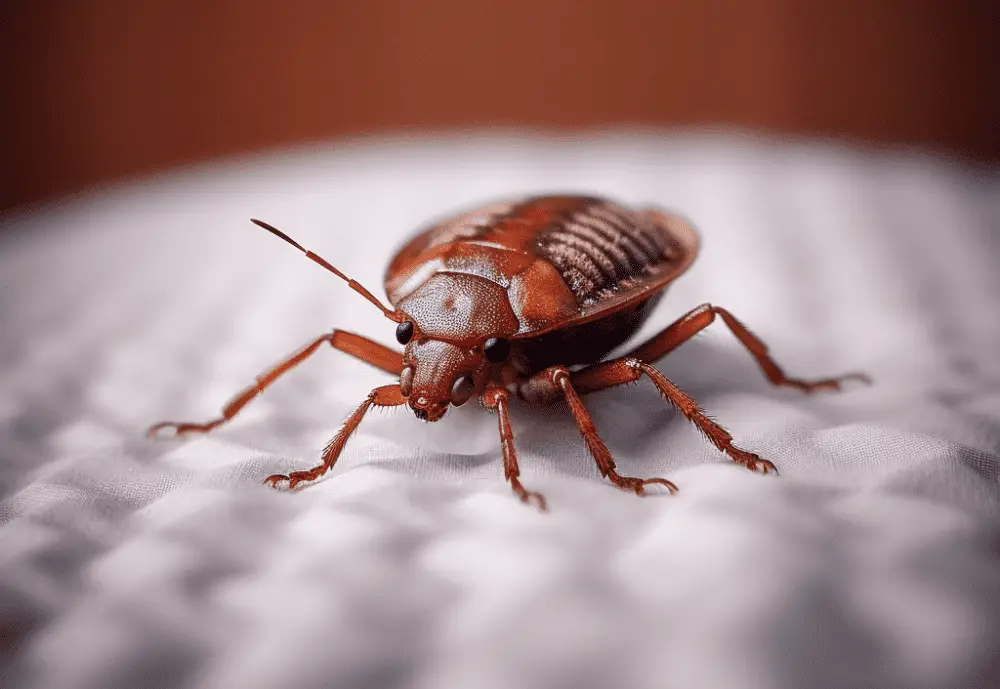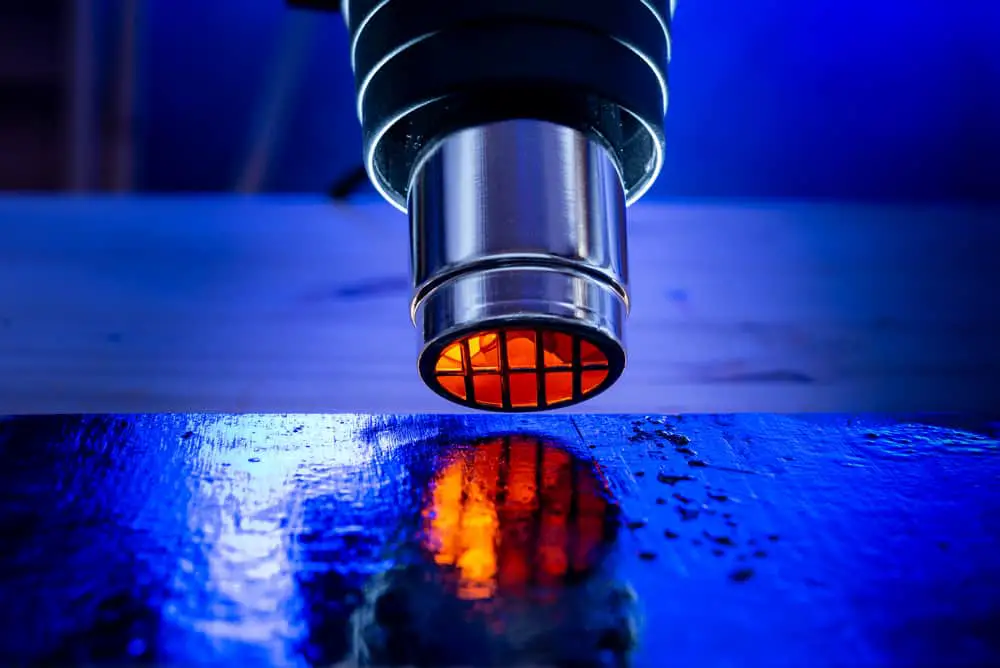Heat guns are versatile tools commonly used for paint stripping, thawing pipes, and various DIY projects. However, their application for killing bed bugs has sparked interest among homeowners dealing with pest issues.
Bed bugs are notoriously difficult to eradicate, often hiding in mattresses, furniture, and other hard-to-reach areas, making it essential to explore alternative methods to control their spread.
One such method to battle these pesky invaders is the use of heat treatment. Bed bugs are highly sensitive to extreme temperatures, and research shows that sustained exposure to heat can effectively kill both adult bed bugs and their eggs.
A heat gun, which can generate temperatures of over 1000°F, might initially seem like a promising weapon in the fight against bed bugs.
Understanding Bed Bugs

Infestation Patterns
Bed bugs are tiny pests that can quickly infest various areas in your home, particularly where people sleep. They are frequently transported into homes via luggage or furniture that has been in infested places. It is essential to understand their infestation patterns to effectively deal with them.
These stubborn pests are usually active at night, and their infestations typically start in mattresses or bed frames, particularly around the seams, tufts, and folds. However, they can quickly spread to other areas, including nightstands, sofas, and upholstered chairs.
Common Hiding Places
Aside from mattresses and bed frames, bed bugs are adept at finding multiple hiding spots that can be practically invisible to the naked eye. Some of these areas include:
- Inside cracks and crevices of furniture
- Along the seams and folds of soft furnishings
- Beneath carpets and rugs
- Behind picture frames and baseboards
As the infestation grows, they may even be found in electrical outlets and appliances or other less common areas.
Behavior and Life Cycle
Understanding bed bug behavior and their life cycle can help inform the most effective treatment approach. Bed bugs are nocturnal insects that feed primarily on human blood during their sleep. They can consume up to seven times their body weight within minutes, making their presence in your home an unpleasant experience.
The life cycle of a bed bug involves five stages, from eggs to full-grown adults. The female bed bug can lay around 200 to 500 eggs in her lifetime, and under ideal conditions, a bed bug can grow from an egg to an adult in just 21 days.
Once fully grown, bed bugs can live for approximately four to six months, although they can survive without feeding for up to a year in some cases. This long lifespan makes them particularly challenging to exterminate.
Heat Treatment for Bed Bugs
Effectiveness of High Heat
Heat treatment is a popular method for eliminating bed bugs because these pests are susceptible to high temperatures. In order to kill bed bugs with heat, the temperature must reach at least 120 degrees Fahrenheit. At this level, the heat is thorough enough to penetrate the insects’ exoskeleton and destroy their cells.
However, some experts recommend using even higher temperatures, up to 200 degrees Fahrenheit. This ensures that the heat is not only effective in killing adult bed bugs but also their eggs and nymphs, which may be hidden in crevices or deep within the fabric of furniture.
During a heat treatment, heaters are used to raise the temperature of the infested area. It is crucial that the heat is evenly distributed so that there are no “cold spots” where bed bugs might escape. To achieve this, professional pest control operators may use fans to circulate the hot air throughout the room.
Professional vs DIY Heat Treatment
If you are considering using a heat gun or other DIY methods to eliminate bed bugs, it is essential to weigh the pros and cons of professional versus do-it-yourself heat treatments.
Professional Heat Treatment:
- Thorough and effective, with specialized equipment.
- Conducted by trained technicians who can ensure that temperatures are reached and maintained for the necessary amount of time.
- Less risk of damaging your belongings by overheating, as professionals have experience navigating different materials.
DIY Heat Treatment:
- More affordable but may not be as successful in completely eliminating the infestation.
- Potential for uneven distribution of heat, leading to some bed bugs surviving.
- Risk of damaging your belongings with extreme heat or through improper use of heating devices like heat guns.
Keep in mind that DIY methods may not be sufficient for severe or widespread infestations. Bed bugs are skilled at hiding and traveling, making it difficult for non-professionals to ensure that all insects, eggs, and nymphs are eradicated.
Hiring a professional pest control operator who specializes in heat treatments can provide peace of mind and a higher likelihood of success in eliminating bed bugs from your home.
Heat Treatment Techniques
Steam Cleaning Mattresses and Furniture
Steam cleaning is an effective way to kill bed bugs hiding in mattresses, box springs, and upholstered furniture. Using a steamer, direct the steam to the seams, crevices, and cracks where bed bugs usually hide. Ensure that the steam is sufficiently hot, as bed bugs and their eggs are susceptible to high temperatures.
Remember to vacuum the treated areas after steam cleaning to remove dead bed bugs and their eggs. Launder linens in hot water to ensure that bed bugs hiding in them are killed. Steam cleaning may not be suitable for delicate items like stuffed animals and electronics, so approach an exterminator for specialized treatment if needed.
Using Heat Guns and Hair Dryers
While using a heat gun or hair dryer is not as effective as a steamer, they can be used as supplementary tools in the treatment process. Direct the hot air from the heat gun or hair dryer into cracks, crevices, and hiding places to increase the chances of success in killing bed bugs.
However, be cautious when using these tools and keep a fire extinguisher nearby to prevent any accidental fires.
Heat Tents and Portable Heaters
Heat tents and portable heaters provide an alternative method for treating bed bug-infested items. It is particularly useful for electronics and other items that might be damaged by steam cleaning. Place the items inside a heat tent or use a portable heater to gradually raise the temperature.
When using heat tents and portable heaters, it is important to ensure even heat distribution to reach all the hiding places of bed bugs. Remember, however, that these methods are not foolproof, as success may vary based on the heat source’s portability and the specific items being treated.
Alternative Bed Bug Removal Methods
There are several alternative methods to using a heat gun to kill bed bugs. In this section, we will explore some of the viable options.
Chemical Treatments
Chemical treatments involve using insecticides to kill bed bugs in infested areas. Bug bombs or foggers release chemicals into the air, which can reach crevices where bed bugs hide. It’s essential to follow the instructions carefully, as misuse can result in ineffective eradication, harm to your health, or damage to your belongings.
Certified professionals can apply stronger chemical treatments for more effective results.
Vacuuming and Laundering Infested Items
Vacuuming can help reduce the number of bed bugs in your home. Make sure to clean all surfaces, especially around mattresses and furniture. Following vacuuming, immediately seal and dispose of the vacuum bag to prevent bed bugs from escaping.
Washing and drying items also help tackle bedbugs. Be sure to wash clothing, bedding, and other infested materials at the highest recommended temperature for each item. Place delicate items or items that cannot be washed in a sealed plastic bag and then place them in the refrigerator or freezer for several days to kill bed bugs and their eggs.
Hiring a Professional Exterminator
Sometimes, it can be challenging to get rid of bed bugs on your own. If you are unsure if you can effectively eliminate bed bugs or if the infestation has become overwhelming, it’s best to turn to a professional exterminator. These experts have the experience, knowledge, and equipment necessary to effectively eradicate bed bugs from your home.
Services generally include a thorough inspection, chemical treatments, and follow-up visits to ensure complete bed bug removal. Some exterminators also use carbon dioxide to freeze or heat treatments to kill bed bugs without chemicals.
Preventing Bed Bug Infestations

Inspecting Luggage and Travel Items
Prevention is key while traveling to avoid bringing bed bugs into your apartment or home. Upon returning from a trip, thoroughly inspect your luggage and other travel items for any signs of bed bugs.
Be vigilant about checking seams, zippers, and pockets, as these pests are known for hiding in small, narrow spaces. Additionally, consider using a luggage cover to provide an extra barrier against bed bugs.
To further minimize the risk of bed bugs hitching a ride into your living space, wash all clothing and fabrics from your trip in hot water and dry on high heat. This will help eliminate any potential eggs or insects that might have found their way into your belongings.
Properly Maintaining Home and Furniture
Regularly inspecting and maintaining your home and furniture can help prevent bed bug infestations. Keep your living space clean and uncluttered, as this reduces hiding spots for bed bugs. Be sure to vacuum frequently, particularly in areas near beds and upholstered furniture, as these are prime locations for potential infestations.
When purchasing second-hand furniture or mattresses, thoroughly inspect the items for signs of bed bugs before bringing them into your home or apartment. Look for small reddish-brown bugs, tiny white eggs, or dark fecal stains that could indicate the presence of bed bugs.
Sealing cracks and crevices in walls, baseboards, and other surfaces can also help prevent bed bugs from taking up residence in your living space. Using a combination of these strategies can contribute to lower levels of bed bug resistance and help you maintain a bug-free home.



